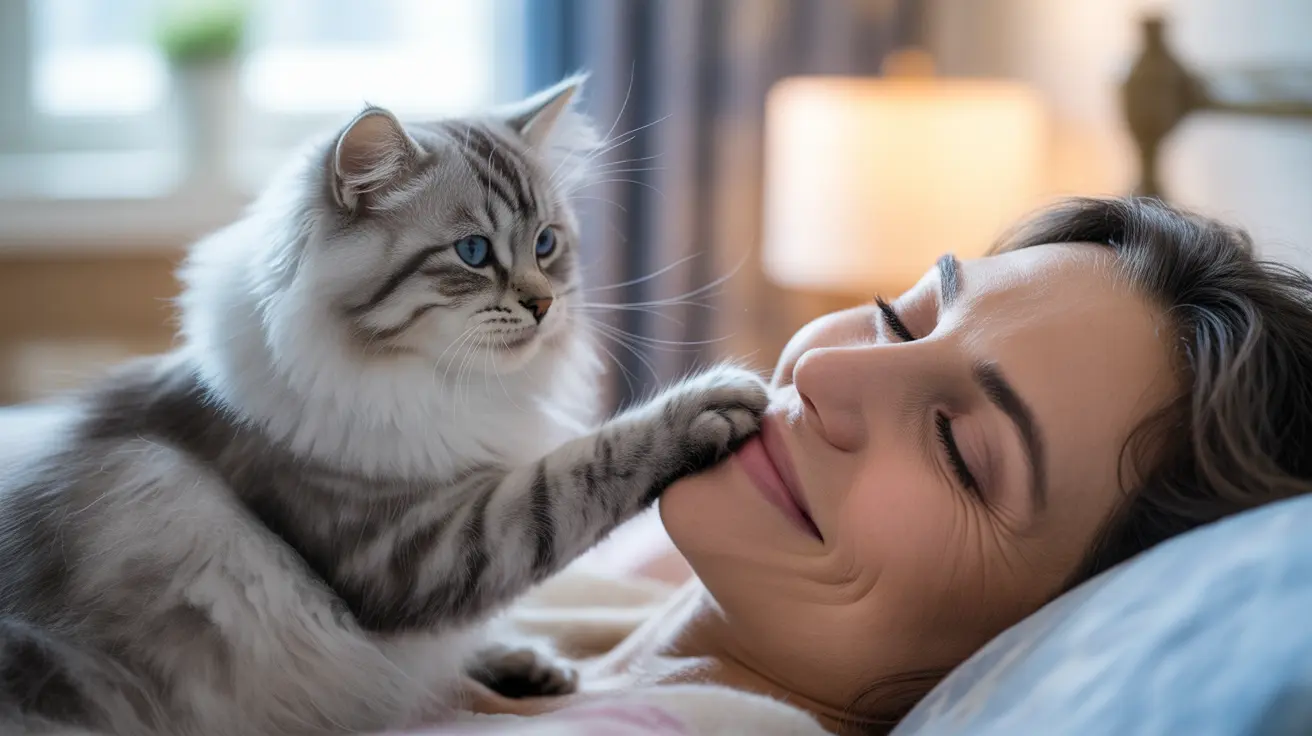The Science Behind Feline Paw Communication
Cat paws are incredibly sophisticated sensory tools, equipped with sensitive nerve endings and specialized scent glands. These interdigital glands allow cats to leave their unique scent signature through touch, making paw-to-face contact a meaningful form of communication.
When your cat touches your face with their paw, they're not just making physical contact – they're also gathering information through their sensitive paw pads and potentially marking you as part of their social group.
Common Reasons for Facial Paw Contact
Attention-Seeking Behavior
One of the most common reasons cats put their paws on your face is to get your attention. This behavior is particularly noticeable during feeding times or when they want to play. Cats learn quickly that a gentle paw tap to the face is an effective way to wake their humans or prompt a response.
Marking Territory and Showing Affection
Through their interdigital glands, cats leave subtle scent markers when they touch you. This marking behavior serves dual purposes: claiming you as their territory and strengthening social bonds. When combined with purring or slow blinks, paw touches often indicate affection and trust.
Setting Boundaries
Sometimes, a paw on your face serves as a gentle "stop" signal. If you're getting too close during cuddle time or petting sessions, your cat might use their paw to maintain their preferred personal space while still keeping contact.
Understanding Your Cat's Body Language
To correctly interpret paw-to-face contact, observe your cat's overall body language:
- Relaxed ears and soft eyes: Usually indicates affection or comfort-seeking
- Tense body or flattened ears: May suggest boundary-setting
- Purring and kneading: Strong indicators of positive social bonding
- Tail position: A relaxed or gently waving tail suggests contentment
How to Respond to Paw-to-Face Contact
The appropriate response depends on the context and timing of the behavior. During daytime hours, you might want to acknowledge your cat's communication by offering attention or play. However, for early morning wake-up calls, it's better not to reinforce the behavior by responding immediately.
Frequently Asked Questions
Why do cats put their paws gently on my face?
Cats place their paws gently on your face to communicate various needs, including attention-seeking, affection-showing, and scent-marking through their paw glands.
What does it mean when my cat taps my face with their paw?
A cat tapping your face can mean they want attention, food, or play. It can also be a way of strengthening social bonds or setting gentle boundaries during close contact.
Is my cat trying to wake me up by touching my face with their paw?
Yes, many cats use this technique to wake their owners, especially around feeding times. It's an effective method they learn works well to get a response.
How can I tell if a cat's paw on my face is affection or a boundary signal?
Look at their overall body language. Relaxed posture, purring, and soft eyes indicate affection, while tense body language or flattened ears suggest they're setting boundaries.
Why do cats use their paws to mark my face with their scent?
Cats have scent glands in their paws and use them to mark their territory and strengthen social bonds. When they touch your face, they're leaving their scent as a sign of ownership and connection.
Understanding why cats put their paws on your face helps strengthen the bond between you and your feline companion. By recognizing and respecting this form of communication, you can better respond to your cat's needs while maintaining healthy boundaries in your relationship.






